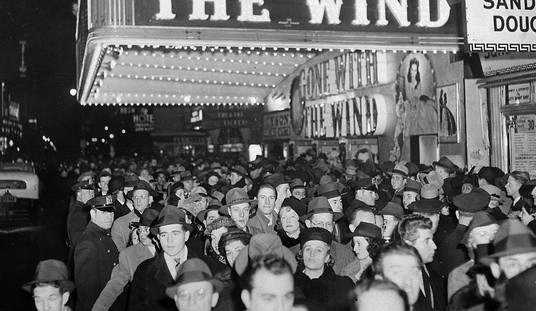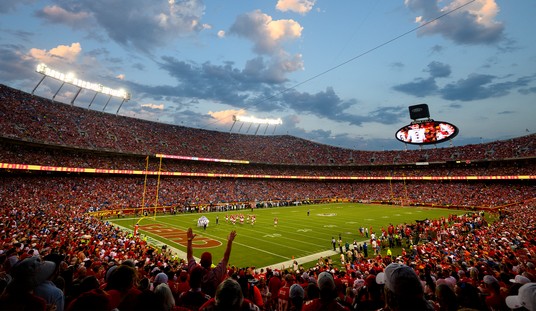 In this image provided by the U.S. Navy, supplies loaded onto an MV-22 Osprey aircraft attached to the amphibious assault ship USS Kearsarge (LHD 3) at Luis Munoz Marin International Airport in San Juan, Puerto Rico on Sept. 25, 2017. Kearsarge is assisting with relief efforts in the aftermath of Hurricane Maria. (Mass Communication Specialist 3rd Class Michael Eduardo Jorge/U.S. Navy via AP)
In this image provided by the U.S. Navy, supplies loaded onto an MV-22 Osprey aircraft attached to the amphibious assault ship USS Kearsarge (LHD 3) at Luis Munoz Marin International Airport in San Juan, Puerto Rico on Sept. 25, 2017. Kearsarge is assisting with relief efforts in the aftermath of Hurricane Maria. (Mass Communication Specialist 3rd Class Michael Eduardo Jorge/U.S. Navy via AP)The top U.S. general overseeing hurricane relief in Puerto Rico, Army Lt. Gen. Jeffrey S. Buchanan, told the Washington Post the military will establish numerous hospitals there as thousands of additional troops and dozens more helicopters arrive in the next few days.
Buchanan said at least a “couple thousand” more troops will deploy from the U.S. mainland. In addition the Puerto Rico National Guard, whose members were slow to activate as they dealt with devastation in their own homes and carried out full-time jobs as first responders, also is expected to play a bigger role:
“What I want to do is max out the mobilizations of the Army Reserve and the Army National Guard on Puerto Rico,” Buchanan said of service members who call the island home. “Because that enables us to, first of all, get these people to work, and you know, they know the communities and understand the language. They can be very, very helpful.”
That would increase the number of Department of Defense personnel in Puerto Rico to about 11,000. There were 2,600 in Puerto Rico or the U.S. Virgin Islands five days after Hurricane Maria made land fall in Puerto Rico and 4,100 when Gen. Buchanan arrived. That number has now increased to more than 9,000.
Initially the military prepared by dispatching amphibious ships including the light amphibious carriers Kearsarge and Wasp and the amphibious landing ship dock Oak Hill to Puerto Rico ahead of Maria’s impact.
These are large ships that have large flight decks to land and dispatch heavy-lift CH-53 helicopters to and from disaster sites. They also have big well-decks — exposed surfaces that are lower than the fore and aft of the ship — from which large landing craft can be dispatched to shore carrying more than 150 tons of water, food and other supplies on each trip.
Those ships are actually the ideal platforms for relief operations owing to their range of assets. The ships, due to their designs to support Marine amphibious landings in war zones, also have hospitals on board to provide medical treatment on a large scale.
In addition, the USNS Supply and the USNS McLean, which are logistics vessels that do not directly participate in operations on shore but support other vessels involved in the humanitarian mission, have also been tasked to help.
According to Gen. Buchanan, the Pentagon upped its game last week, deploying cargo jets filled with troops and supplies, more Navy Sea Hawk and Marine Corps Super Stallion helicopter sand sending the hospital ship USNS Comfort from Norfolk. The Navy will send another combat ship to Puerto Rico, boosting relief efforts.
The military had 25 helicopters in Puerto Rico last week, and 44 as of Tuesday. By the end of the week, there will be more than 70.
As additional troops arrive, Buchanan anticipates shifting personnel to reach as many people as possible.
The Comfort arrived off San Juan on Tuesday and is likely to be sent to the island’s eastern side as two additional Army hospitals are set up on the ground there, the Comfort could be shifted to Puerto Rico’s southern side. An Air Force hospital will be set up north.
The Defense Department remains in a supporting role, working with the Federal Emergency Management Agency and the Puerto Rico government. That’s the way it works under federal law for emergency management — the federal government is in support of state and local government. It is a team effort.
Two more things.
First, about the criticism that the Comfort should have been dispatched to Puerto Rico sooner. That wouldn’t have been wise according to retired Navy Captain Jerry Hendrix. Now a senior fellow with the Center for a New American Security, previously served for decades both on the high seas and in high-level staff jobs, including with the Chief of Naval Operations’ Executive Panel and the Office of the Undersecretary of Defense for Policy’s Irregular Warfare Quadrennial Defense Review. Hendrix, has degrees from Purdue, Harvard, the Naval Postgraduate School and a Ph.D. from Kings College in London:
Comfort can add to the solution, but her lack of well-decks and large boats as well as her limited support of helicopter operations means that she has to go alongside a pier to be effective. In the immediate aftermath of a huge storm, pulling into a port that has not been surveyed for underwater obstacles like trees or cables or other refuse is an invitation to either put a hole in your ship or foul your propellers or rudders.
That being said, there was a broad misunderstanding of the Comfort’s mission. She is not an “emergency response ship” but rather a hospital ship. She was built to accompany a large military force into a war zone as part of a buildup over time of capabilities to respond to wartime injuries. She is manned by military and civilian mariners as well as active and reserve medical personnel. It takes time to both man and equip her for sea. Given that there was no certainty where the hurricane would hit, it doesn’t make sense to have readied her prior to its impact.
Second, keep in mind that Puerto Rico was hit by two powerful hurricanes in two weeks. On September 6 the eye of Hurricane Irma, then a Category 5 storm, skirts just north of San Juan. Puerto Rico experiences a deluge of rain and 100-mile-per-hour gusts, but it avoids the worst of Irma’s effects. About two-thirds of the island’s electricity customers lose power and about 34 percent of its population loses access to clean water.
Just two weeks later, on September 20, Hurricane Maria makes landfall in Puerto Rico with sustained winds of 155 miles per hour — almost a Category 5 hurricane, defined as any tropical storm with winds 157 miles per hour or higher.
Parts of Puerto Rico saw 30 inches of rain in one day, equal to the amount that Houston received over three days during Hurricane Harvey. The winds cause “tornado-like” damage over a swath of the island and destroy the National Weather Service’s observing sensors in the territory.
Maria knocks out power to the entire island. Much of the island’s population, including swaths of San Juan, cannot access clean water without electrical power. Local officials warn that some towns see 80 to 90 percent of their structures destroyed.
The head of Puerto Rico’s public power utility, says the Island’s entire electrical infrastructure has been “destroyed.” Puerto Rican officials warn that restoring power to the island could take six to eight months.
Puerto Rico’s entire communications infrastructure has been knocked out. Eighty-five percent of the island’s 1,600 cell towers don’t work, and neither do the vast majority of internet and telephone lines.
The Puerto Rican government warns that Guajataca Dam, in the territory’s northwest, could fail at any moment and begins evacuating the 70,000 people who live nearby.
It takes two days after Maria’s landfall for the airport in San Juan reopen to military traffic.
It’s three days after landfall before the main port in San Juan reopens. More than 1.6 million gallons of water, 23,000 cots and dozens of generators arrive on 11 ships. FEMA of Puerto Rico forgot the fuel.
One telling thing Gen. Buchanan told the Washington Post is that more fuel would help:
“If I could do one thing to make a big difference here, I would flood this place with fuel, both gasoline and diesel,” Buchanan said. “Because right now, people don’t have gas, and it’s hard to get back to work if you can’t drive to work. … We’ve got a lot coming in, and we’re just going to keep pushing hard on it.”
According to Chris Krebs, assistant secretary for infrastructure protection at the Department of Homeland Security, as of yesterday there are over 17,000 federal workers down in the islands.













Join the conversation as a VIP Member